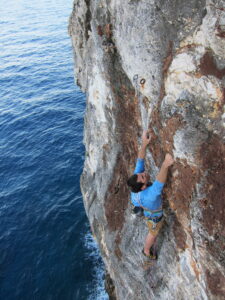The Bluff View Guide to Climbing on Cayman Brac
Copyright © 1998-2025 by John Byrnes & Matt Arsenault
January 2025 Edition
There are over 130 sport climbs on Cayman Brac and many more awaiting future development. The climbs range from 5.6 to 5.13b with the bulk of the climbs (~75%) between 5.10 – 5.12. The rock is mostly clean pocketed limestone but Spot Bay is also rich in stalactites and tufas. All the climbs featured in this guide are bolted with titanium bolts that are corrosion resistant.
This guide is offered to you free of charge and we hope it serves you well. We would like feedback whenever you discover an error, omission or get horribly lost trying to find a climb. Feedback on grades and quality ratings are always appreciated.
The guide is available below or click here to download for a printer-friendly PDF version.
Supplemental information, including route photos and georeferenced locations, is also available for purchase through Gunks App. You can also find some information on Mountain Project (please note that not all climbs are featured on Mountain Project and information may outdated).
Please note that the Backyard Wall and Yogi Wall (contained in previous versions of this guidebook) are accessible by permission only. Please be respectful of these landowner requests. Contact Rock Iguana for further permission information (info@climb.ky).

